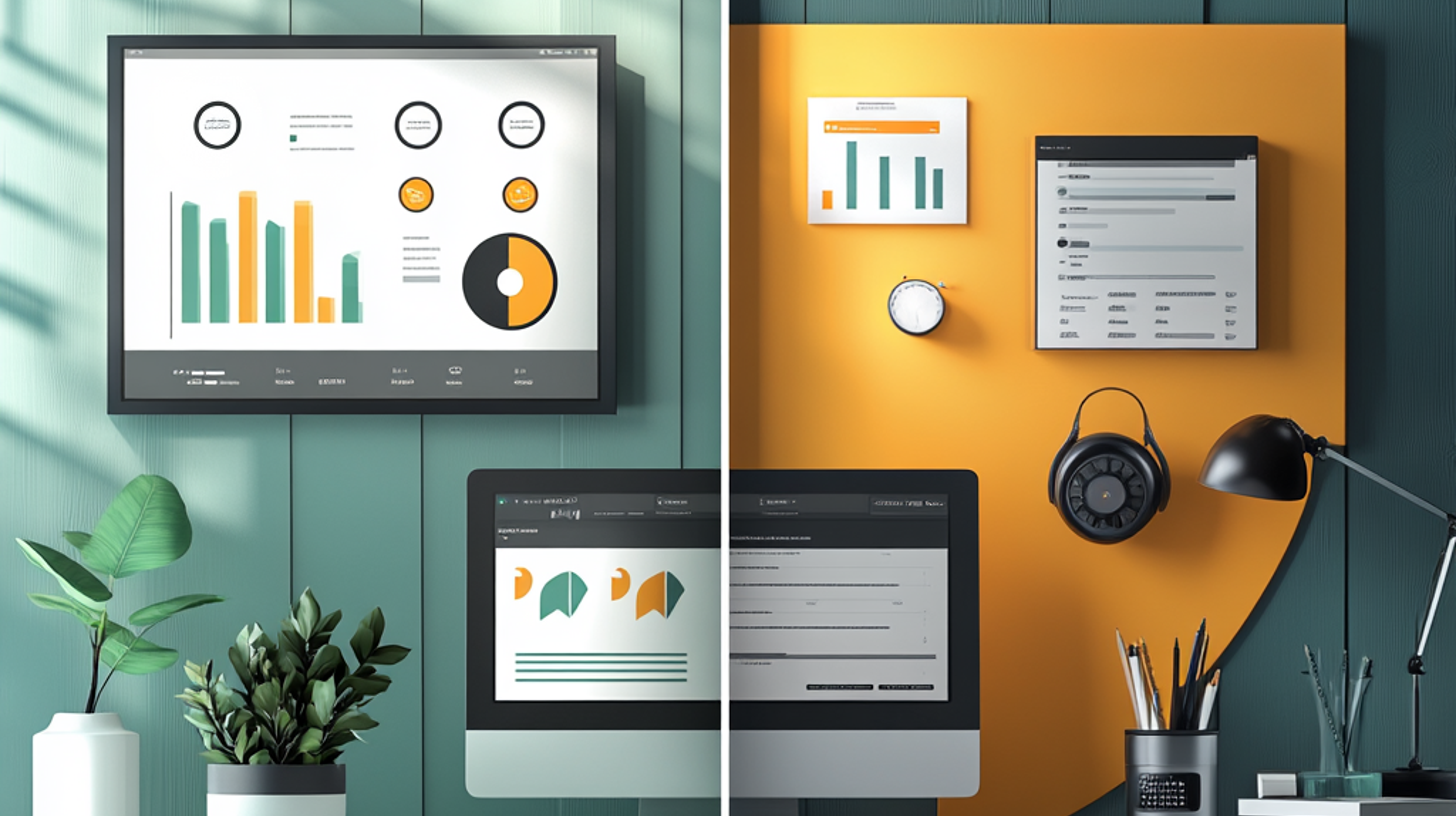Debt Collection Software vs. AR Automation: Which Is Right for Your Agency?
In the fast-paced world of debt collection and accounts receivable management, choosing between specialized debt collection software and AR automation software isn't always straightforward. Yet, making the right decision can significantly impact your agency’s efficiency, compliance, and cash flow. So, let’s dive in and explore the ins and outs to ensure you choose the best solution for your business.
Understanding AR Automation Software
What is AR Automation Software?
Accounts receivable automation software streamlines the AR process, primarily by automating repetitive manual tasks like the invoicing process, payment reminders, and cash application. Unlike traditional manual work, AR software integrates directly with ERP systems, such as QuickBooks and NetSuite, to accelerate financial operations and eliminate human error.
Key Benefits of AR Automation
- Improved Cash Flow: Automated invoicing and faster payments directly improve your working capital.
- Reduced DSO (Days Sales Outstanding): Automatic payment reminders and easy payment options significantly reduce late payments.
- Enhanced Accuracy: AI-powered data entry reduces mistakes common in manual processes, boosting your profitability.
- Better Customer Experience: Customer portals provide self-service options, enhancing customer relationships by bolstering trust through transparency and convenience.
Typical Functions of AR Automation Software
- Cash application
- Automated invoicing
- Payment processing (ACH, credit cards)
- Real-time dashboards for AR management
- Customer communications
- Cash flow forecasting
- Automated reminders
- Aging reports
Exploring Debt Collection Software
What is Debt Collection Software?
Debt collection software is a purpose-built platform that helps third-party collection agencies recover past-due accounts more efficiently—without adding headcount or risking compliance issues. Unlike generic AR tools, modern collection software includes built-in compliance safeguards (like Reg F and FDCPA), automated outreach tools (SMS, email, AI phone agent), real-time dashboards, and self-service payment portals—all in one system. The right software empowers teams to streamline workflows, reduce manual work, and scale recovery efforts across thousands or millions of accounts.
Core Advantages of Debt Collection Software
- Higher Recovery Rates: AI-powered collection strategies help agencies convert outstanding invoices into faster payments.
- Built-In Compliance: Built-in safeguards for FDCPA, TCPA, and Regulation F reduce your compliance risks significantly.
- Scalable Workflows: Debt collection software streamlines complex workflows, handling everything from automated follow-ups to various payment methods.
- Real-Time Insights: Dashboards and forecasting tools offer real-time visibility into collection metrics, helping CFOs and management teams make informed decisions quickly.
If you’re evaluating platforms, these are the features that truly set modern debt collection software apart:
- Orchestrated Outreach at Scale: Not just omnichannel—think smart outreach. The best platforms empower you to coordinate emails, texts, and voice calls based on consumer behavior, compliance rules, and real-time performance data.
- Configurable Portals with Embedded Actions: Your consumer and client portals shouldn’t just show balances—they should drive action. Look for features like dispute initiation, document uploads, and dynamic payment plan selection baked into the portal experience.
- Adaptive AI Agents: Think beyond “chatbots.” AI phone agents that can verify consent, escalate high-risk calls, and perform warm transfers while logging every interaction in your system of record are redefining collector productivity.
- Workflow Intelligence—Not Just Automation: Platforms like Aktos let admins test, tweak, and deploy workflows on the fly (e.g., segmenting by risk score, age, balance, or region). This isn’t just automation, it’s real-time strategy deployment.
- Compliance That Monitors Itself: Modern software should do more than enforce rules, it should surface compliance risks before they escalate. Expect automatic alerts for over-contact, expired consent, and missed disclosures (plus full audit trails).
- Built-In Flexibility for Payment Experiences: From credit card to ACH to text-to-pay links, look for tools that allow you to customize not just how you get paid, but how the payment experience feels. Bonus points for multilingual UX and fee configuration.
- Dispute + Credit Bureau Tools You’ll Actually Use: Legacy tools hide this functionality behind service tickets. Modern systems bring dispute workflows, validation notices, and bureau reporting front and center—configurable and automated.
This is what a truly modern debt collection platform should offer, not just what looks good on a demo slide.
Debt Collection Software vs AR Automation Software: Spotting Key Differences
Purpose and Capabilities
- AR Automation Software: Best for streamlining routine financial tasks—like generating invoices, forecasting cash flow, and managing incoming customer payments. Ideal for finance teams focused on improving working capital and reducing manual reconciliation.
- Debt Collection Software: Built specifically for recovering overdue accounts and resolving delinquency. These platforms go beyond AR automation with features like outreach orchestration, compliance enforcement, credit bureau reporting, and dispute handling—making them mission-critical for agencies focused on recovery, compliance, and scale.
Compliance Features
- AR Automation Software: Typically lacks integrated compliance capabilities, requiring additional manual oversight.
- Debt Collection Software: Comes with comprehensive compliance management tools, vital for agencies facing strict regulatory scrutiny.
Scalability
- AR Software: Suitable for small-scale operations but may struggle as your collections management needs become more complex.
- Debt Collection Software: Built to scale effortlessly from hundreds to millions of customer accounts.
Omnichannel Communication
- AR Software: Usually provides basic communication channels.
- Debt Collection Software: Offers comprehensive omnichannel strategies including AI-powered follow-ups and automated invoicing tailored to different customer segments.
When A/R Automation Software Makes Sense
AR automation software is a smart fit if your business isn’t focused on delinquent debt recovery—but still needs to improve how it manages incoming revenue. Consider A/R automation if:
- You're Focused on Billing Accuracy and Timeliness: If your day-to-day revolves around issuing invoices, tracking receivables, and ensuring timely payments, AR software can eliminate bottlenecks.
- You Manage High Volumes of Low-Risk Accounts: For organizations that handle a steady flow of non-delinquent transactions, AR tools help you scale invoicing, follow-ups, and reconciliation without overcomplicating the workflow.
- You Need Tight Integration with Your ERP or Accounting System: Platforms like NetSuite or QuickBooks pair well with AR automation solutions designed to sync payment data, reduce reconciliation time, and support end-to-end financial reporting.
- You Want Real-Time Visibility into Working Capital: Get a clearer picture of DSO, aging receivables, and customer payment trends—without having to manually compile reports.
- Your Finance Team Needs to Move Fast: A/R automation platforms typically offer faster onboarding and require less customization—ideal for teams that want results now, not six months from now.
When Debt Collection Software is the Right Choice
You should consider specialized debt collection software if:
- Recovering Past-Due Accounts Is Your Core Business: If you're managing delinquent accounts day in and day out, purpose-built tools will help your collectors operate faster, smarter, and with less manual oversight.
- You Operate in a Highly Regulated Environment: From Reg F to state-specific rules like Washington’s “3-in-7,” you need built-in compliance logic that enforces rules automatically—not spreadsheets and guesswork.
- You Need Real-Time Visibility at Scale: Modern software gives COOs and VPs of Collections live dashboards, risk alerts, and performance tracking—no more waiting on static reports.
- You're Ready to Streamline Without Adding Headcount: Platforms like Aktos help you automate outreach, prioritize accounts, and reduce DSO—all without hiring more staff.
- Your Legacy System Is Holding You Back: If onboarding new clients is slow, workflows are rigid, or you're locked into one dialer or payment vendor, it’s time to upgrade to something more flexible.
Hybrid Solutions: Best of Both Worlds
What if your needs span both categories? Today’s advanced platforms, such as Aktos, offer robust integration capabilities, allowing your agency to benefit from a hybrid approach. Aktos seamlessly integrates AR and collections workflows, enabling finance teams to optimize financial operations comprehensively.
Making the Switch: Key Considerations for Transitioning Software
Transitioning from manual or outdated systems to an advanced AR automation solution or specialized debt collection software involves several critical considerations:
- Assess Your Current Processes: Identify inefficiencies, compliance gaps, and manual tasks that could benefit from automation.
- Team Readiness and Training: Ensure your AR team is prepared and adequately trained for seamless onboarding and efficient utilization of new software.
- Integration Capability: Verify that the software can easily integrate with your existing ERP systems and accounting software for smooth operations.
- Pricing and Scalability: Evaluate the pricing structure and select a software solution capable of scaling with your business to avoid future disruptions and additional transition costs.
Evaluating Your Agency’s Unique Needs
Before deciding, ask these crucial questions:
- What complexity level do our accounts receivable processes involve?
- How significant is the compliance risk in our collections processes?
- Are real-time analytics and forecasting critical for our strategic decisions?
- Is scalability a priority as our business grows?
Conclusion: Boost Your Agency's Cash Flow with the Right Solution
Choosing between debt collection software and AR automation software significantly impacts your agency’s cash flow, efficiency, and profitability. By carefully assessing your unique requirements and potential growth, you'll confidently select a solution to streamline your workflows and optimize your cash process.
Ready to see the power of specialized software? Book your Aktos demo today and experience firsthand how the right platform transforms your collections and receivables processes.





